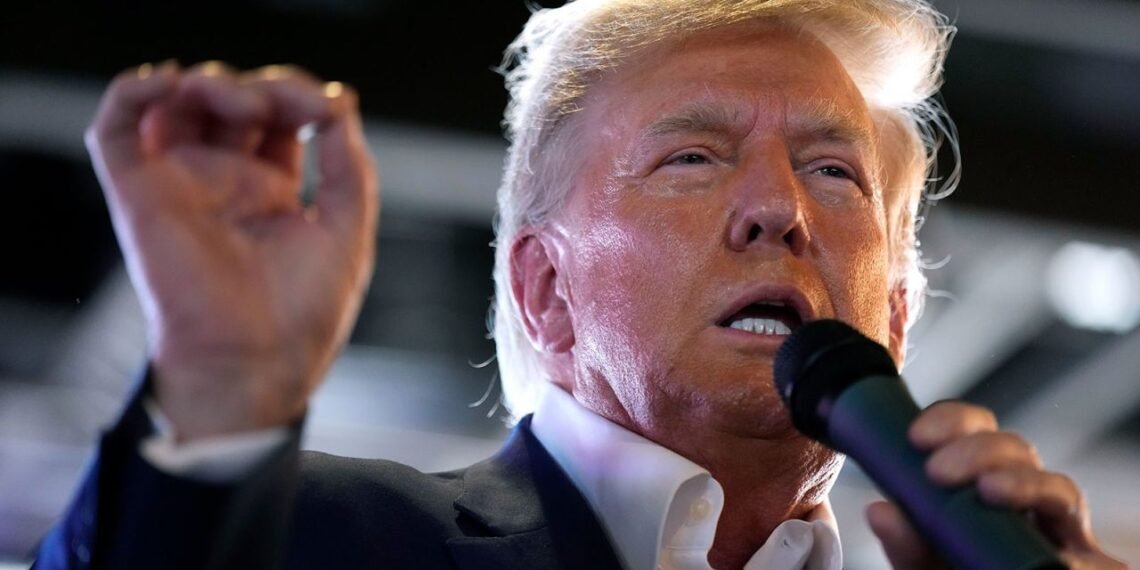US-China Tariff War Impact: Aggressive US tariffs and China’s counter-measures could significantly disrupt global commerce, redirecting supply chains and potentially reducing global GDP, according to a UN expert.
BY PC Bureau
A new US tariff regime spearheaded by President Donald Trump could trigger a 3 per cent contraction in global trade and lead to a significant re-routing of export flows, potentially benefiting emerging economies like India, Canada, and Brazil, a top United Nations trade official has warned.
Pamela Coke-Hamilton, Executive Director of the International Trade Centre, speaking in Geneva on Friday, highlighted the potential long-term disruptions to international commerce and economic integration stemming from the aggressive US tariff hikes and the subsequent retaliatory measures from China, according to a PTI report.
“Global trade could shrink by 3 per cent, with significant long-term shifts in trade patterns and economic integration,” Coke-Hamilton told PTI. She pointed out that Mexico, heavily impacted by the tariffs, is already witnessing a shift in its export destinations away from traditional markets such as the US, China, and Europe, with modest gains being observed in Canada and Brazil, and to a lesser extent, India.
The White House recently announced substantial tariffs on imports, including a striking 145 per cent levy on Chinese goods. While a 90-day pause on “reciprocal tariffs” was granted to most nations, China was excluded and swiftly responded by imposing its own significant 125 per cent tariff on US imports.
Also Read: Myanmar Brutal Justice: MNDAA Executes Five, Including Chinese Citizen
The ongoing tariff war is reportedly causing a widespread reorientation of global supply chains. Coke-Hamilton noted that Vietnamese exports are being redirected away from the US, Mexico, and China, with noticeable increases in trade towards the European Union, Korea, and the Middle East and North Africa (MENA) regions.
The apparel sector se
Global trade could shrink by three per cent and exports could see a shift from markets such as the US and China to India, Canada and Brazil due to tariffs imposed by the US, a top UN economist has said. https://t.co/rs3krCDVpK
— The Siasat Daily (@TheSiasatDaily) April 12, 2025
rves as a prime example of the potential impact. “Textiles is a top industry in terms of economic activity and employment for developing countries,” Coke-Hamilton stated. She warned that Bangladesh, the world’s second-largest apparel exporter, could face a 37 per cent reciprocal tariff if the US measures proceed, potentially leading to a $3.3 billion reduction in its annual US exports by 2029.
Coke-Hamilton emphasized that for developing nations to effectively navigate such economic shocks, whether from trade policy shifts, pandemics, or climate disasters, prioritizing diversification, value addition, and regional integration is crucial. “There are opportunities for developing countries not just to navigate times of uncertainty, but to proactively prepare for the long haul,” she asserted.
Early economic modelling conducted with the French economics research institute CEPII suggests that even before the latest wave of tariffs and China’s countermeasures, global GDP could be reduced by 0.7 per cent by 2040. The modelling indicates that countries such as Mexico, China, Thailand, and nations in Southern Africa are among the most vulnerable, alongside the United States itself.
ALSO READ: ED Moves to Seize ₹661 Crore AJL Assets in Money Laundering Case
Meanwhile, the Asia Society Policy Institute (ASPI) in Washington has cautioned about broader geopolitical implications. Wendy Cutler, ASPI Vice President and Managing Director, commented, “With China’s announcement of further tariff hikes against US imports, it’s clear that hopes that China would blink first in this trade war are misplaced. China is in for the long haul.”
Cutler suggested that while Beijing might have reached its limit in terms of symmetrical tariff retaliation, it likely possesses “other tools in its arsenal” that could be deployed if tensions continue to escalate.
“The steep tariffs now in place—145 per cent for Chinese imports into the US and 125 per cent for US imports to China—virtually halt all goods trade between the two largest economies in the world,” she concluded.
Daniel Russel, ASPI’s Vice President of International Security and Diplomacy, observed that Chinese President Xi Jinping is maintaining a calm demeanor amidst the crisis, seemingly waiting for Trump’s tariff policy to face domestic pressure and potentially falter.













